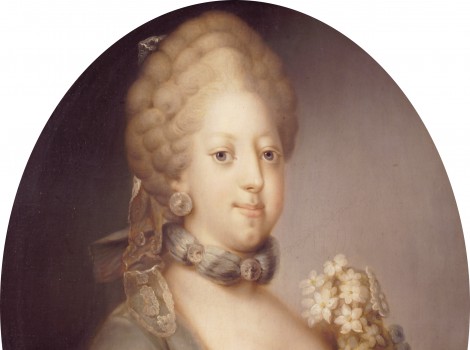Caroline Mathilde
Caroline Mathilde became the Queen of Denmark in 1766, when she married Christian VII. She was the daughter of Prince Frederick Ludwig of Wales and a sister of King George III of Great Britain. Caroline Mathilde was the mother of Frederik VI and Princess Louise Augusta.
Caroline Mathilde’s marriage to the mentally ill Christian VII isolated her at the Royal Court. In 1770 she began a love affair with the King’s physician, J.F. Struensee, and Louise Augusta, to whom she gave birth in 1771, was most likely his daughter. After the fall of Struensee the next year, Caroline Mathilde was arrested and she confessed the adultery. The marriage to Christian VII was dissolved and she was deported. She spent the last years of her life in a castle in Celle, Germany.
Caroline Mathilde was a tragic figure. As a very young person the cheerful Queen was embroiled in events, the consequenses of which she could not foresee. Because of rumours about her and Struensee and allegations about a harsh upbringing of the Crown Prince, she was very unpopular with the population at large.

 Dansk
Dansk
 English
English
 Deutsch
Deutsch









